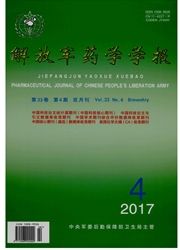

 中文摘要:
中文摘要:
药物外排转运蛋白对药代动力学参数变化起着关键性作用。近年来研究较多的外排型转运蛋白除了P-糖蛋白(P-glycoprotein,P-gp)、乳腺癌耐药蛋白(breast cancer resistance protein,BCRP)外,多药耐药相关蛋白2(multidrug resistance protein 2,MRP2)逐渐成为了研究的热点。肿瘤微缺氧环境中一些信号转导通路、转录因子参与MRP2基因的表达调控,这些因子包括过氧化物酶体增殖剂激活受体(peroxisome proliferators-activated receptors,PPARα)、核因子-κB(nuclear factorκB,NF-κB)、孕烷X受体(pregnane X receptor,PXR)、法尼醇X受体(farnesoid X receptor,FXR)、组成型雄烷受体(constitutive androstane receptor,CAR)和micro RNA等,但MRP2在缺氧条件下的调控机制尚不完全清楚,且是一个很复杂的过程。MRP2作为最主要的外排转运蛋白之一,多种常用药物及抑制剂是其底物,MRP2的表达变化会显著影响这些底物药代动力学(吸收、分布、代谢、排泄)。同时,缺氧状态下MRP2不仅是由单一的信号通路或者某个转录基因调控,而是涉及多个信号通路以及诸多基因,从而构成一个调控网络。
 英文摘要:
英文摘要:
Drug efflux transporters plays a key role in pharmacokinetics parameters changes. In recent years, in addition to P-glycoprotein (P-gp), breast cancer resistance protein (BCRP), MRP2 has become an advanced research hotspot. Several signaling pathways andtranscription factors have been reported to be involved in regulation of MRP2 expression in hypoxic microenvironment of tumor, such as peroxisome proliferators-activated receptors (PPARα), nuclear factor κB (NF-κB), pregnane X receptor (PXR), farnesoid X receptor (FXR), constitutive androstane receptor (CAR) and microRNA. But it is not fully understood how MRP2 is regulated under hypoxia. MRP2 is one of the most important efflux transporter proteins. Many drugs or inhibitors have been shown to be its substrate. In the hypoxic environment, changes in expression of MRP2 can significantly affect drug's pharmacokinetics (absorption, distribution, metabolism, excretion). Simultaneously, the regulation of MRP2 expression under hypoxic might involve several signal pathways and many genes, which constitute an integral gene regulatory networks.
 同期刊论文项目
同期刊论文项目
 同项目期刊论文
同项目期刊论文
 期刊信息
期刊信息
